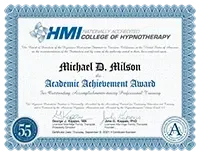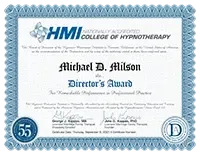Hypnosis and Hypnotherapy Articles
Read the latest articles posted by MHI.

Unveiling the Evolution of Hypnosis: From Ancient Practices to Modern Applications
Introduction
Hypnosis, a practice that has intrigued and captivated minds for centuries, holds a significant place in the realm of human consciousness. From ancient rituals to modern therapeutic techniques, the history of hypnosis is an intriguing journey that unveils the mysteries surrounding this fascinating field. Understanding the origins and evolution of hypnosis is not only a testament to our curiosity as humans but also essential for those studying or practicing this unique art form.
The concept of hypnosis dates back to ancient times, where it was intertwined with religious and spiritual practices. Ancient civilizations such as the Egyptians, Greeks, and Romans all had their own versions of hypnosis-like practices. These early forms of hypnosis were often used in healing rituals or as a means to communicate with higher powers. The understanding of these practices evolved over time, laying the foundation for what we now know as modern hypnosis.
Throughout history, there have been key figures who have made significant contributions to the development and understanding of hypnosis. One such figure is Franz Mesmer, an 18th-century physician who believed in the existence of a magnetic fluid that could be manipulated to induce healing effects on patients. Mesmer's theories laid the groundwork for what would later become known as "mesmerism" or "animal magnetism." Another influential figure in the history of hypnosis is James Braid, a Scottish surgeon who coined the term "hypnotism" and conducted extensive research on its psychological aspects.
As we move into the 20th century, we witness a significant shift in how hypnosis is perceived and utilized. Sigmund Freud, often regarded as one of the most influential figures in psychology, incorporated hypnosis into his psychoanalytic therapy. Freud believed that accessing unconscious thoughts and memories through hypnotic states could help individuals gain insight into their psychological issues. This integration of hypnosis into psychoanalysis paved the way for further exploration and acceptance within mainstream psychology.
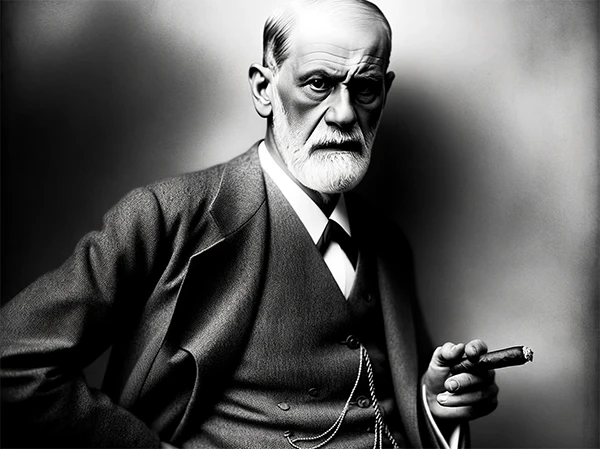
In modern times, hypnosis has found its place in various applications, ranging from medicine to therapy. In the medical field, hypnosis has been used as an adjunctive therapy for pain management, anesthesia, and even surgical procedures. It has also proven effective in treating psychological conditions such as anxiety disorders, phobias, and post-traumatic stress disorder (PTSD). Additionally, hypnosis has gained popularity as a tool for personal development and self-improvement, with practitioners using it to enhance performance in sports, overcome bad habits, and improve overall well-being.
Ancient Origins of Hypnosis
The history of hypnosis dates back to ancient times, where early practices and beliefs laid the foundation for the development of this intriguing field. In ancient civilizations such as Egypt, Greece, and India, hypnosis was already being utilized in various ways.
One of the earliest recorded instances of hypnosis can be traced back to ancient Egypt. The Egyptians believed in the power of suggestion and used a form of hypnotic trance during their healing rituals. They would induce a sleep-like state in individuals through rhythmic chanting, music, and the use of specific herbs. This altered state of consciousness allowed priests or healers to communicate with the subconscious mind and address ailments or psychological issues.
Similarly, ancient Greek civilization also recognized the potential benefits of hypnosis. The famous Temple of Asclepius served as a healing center where individuals seeking relief from physical or mental ailments would undergo a ritualistic process known as "temple sleep." During this practice, patients would spend the night in a sacred space within the temple complex. They would experience vivid dreams or visions that were interpreted by priests as messages from the gods. This therapeutic approach aimed to bring about healing and resolution through deep relaxation and altered states of consciousness.
In India, hypnosis played a significant role in traditional medicine systems such as Ayurveda and Yoga. Ancient texts like the Vedas mention techniques similar to modern-day hypnosis, including guided visualization and suggestion. These practices were used to induce relaxation, enhance concentration, and tap into the deeper layers of consciousness for self-improvement or spiritual growth.
The common thread among these ancient civilizations was their recognition of the power of suggestion and altered states of consciousness in facilitating healing and personal transformation. While their understanding may have been rooted in mysticism or religious beliefs, these early practices laid the groundwork for further exploration into hypnosis.
Key Figures in the Development of Hypnosis
Throughout history, there have been several key figures who have made significant contributions to the development and understanding of hypnosis. These individuals have played a crucial role in shaping the field and advancing our knowledge of this fascinating practice. In this section, we will explore three influential figures: Franz Mesmer, James Braid, and Sigmund Freud.
Franz Mesmer is often regarded as one of the pioneers of hypnosis. Born in 1734 in Germany, Mesmer was a physician who developed a theory known as animal magnetism. He believed that there was a magnetic force within the human body that could be manipulated to induce healing and altered states of consciousness. Mesmer's techniques involved making passes over the body and using magnets to channel this energy. His work gained popularity in the late 18th century and became known as mesmerism.
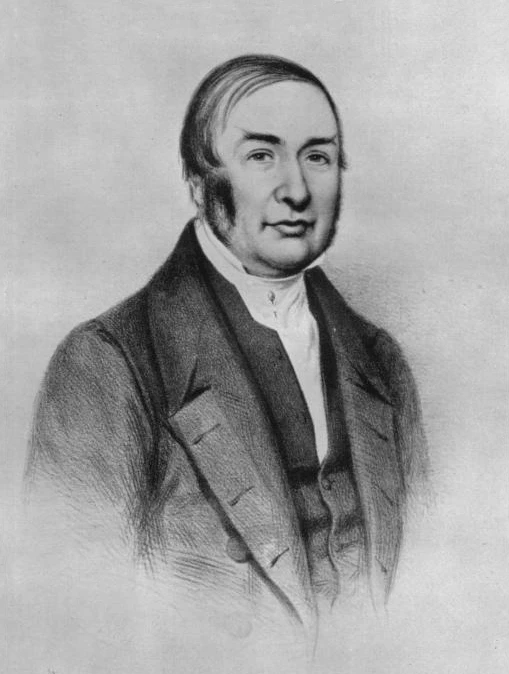
James Braid, a Scottish surgeon, is credited with coining the term "hypnosis" in the 19th century. Braid was initially skeptical of mesmerism but became intrigued by its potential after witnessing a demonstration by Charles Lafontaine, a renowned mesmerist at the time. Braid believed that mesmerism was not due to any magnetic forces but rather suggested that it was a state of heightened focus and suggestibility. He coined the term "hypnosis," derived from the Greek word "hypnos" meaning sleep, to describe this state.
Braid's work marked an important shift in how hypnosis was perceived. He emphasized that hypnosis did not involve sleep but rather induced a trance-like state characterized by deep relaxation and heightened concentration. Braid conducted extensive research on hypnosis and published several influential works on the subject. His efforts helped establish hypnosis as a legitimate field of study separate from mesmerism.
Another figure who greatly influenced our understanding of hypnosis is Sigmund Freud, often referred to as the father of psychoanalysis. While Freud initially used hypnosis in his practice, he eventually developed his own therapeutic technique known as psychoanalysis. Freud believed that hypnosis could access the unconscious mind and uncover repressed memories or unresolved conflicts.
However, Freud later abandoned the use of hypnosis in favor of free association and dream analysis. Despite this shift, Freud's exploration of hypnosis laid the foundation for the development of psychotherapy and greatly influenced subsequent theories on the subconscious mind.
In summary, Franz Mesmer, James Braid, and Sigmund Freud are three key figures who played significant roles in the development of hypnosis. Mesmer's theory of animal magnetism sparked interest in altered states of consciousness, while Braid's research led to a deeper understanding of hypnosis as a trance-like state. Freud's exploration of hypnosis contributed to our understanding of the unconscious mind and paved the way for modern psychotherapy. These individuals not only shaped the field but also laid the groundwork for future advancements in hypnosis as a therapeutic tool. Their contributions continue to impact our understanding and application of hypnosis today.
The Evolution of Hypnosis in the 20th Century
The 20th century marked a significant turning point in the evolution of hypnosis. During this time, there was a rise in scientific study and research on hypnosis, leading to groundbreaking discoveries and innovative approaches to its practice. One key figure who played a pivotal role in shaping the field of hypnotherapy during this era was Milton H. Erickson.
Milton H. Erickson
Erickson, an American psychiatrist and psychologist, is widely regarded as one of the most influential figures in the history of hypnosis. His unique and innovative approaches to hypnotherapy revolutionized the field and paved the way for modern applications of hypnosis.
Unlike his predecessors who relied heavily on direct suggestions and commands, Erickson believed in harnessing the power of indirect suggestion and utilizing the individual's own inner resources. He understood that each person had their own unique experiences, beliefs, and capabilities, and he tailored his approach accordingly.
One of Erickson's notable contributions was his emphasis on utilizing language patterns to induce trance states. He believed that carefully chosen words could bypass conscious resistance and directly access the unconscious mind. By using metaphors, stories, and anecdotes, he was able to communicate with the deeper layers of the mind, facilitating profound changes in perception and behavior.
Erickson also introduced the concept of utilization into hypnotherapy. Rather than trying to suppress or eliminate unwanted symptoms or behaviors, he encouraged therapists to work with them creatively. He believed that every symptom or behavior served a purpose for the individual at some level and that by understanding its underlying function, therapists could help clients find more adaptive ways to meet their needs.
Another significant development in the 20th century was the integration of hypnosis into mainstream medicine and psychology. As scientific research on hypnosis grew, its effectiveness as a therapeutic tool became increasingly recognized by professionals in various fields.
In medicine, hypnosis began to be used as an adjunctive therapy for pain management, anesthesia induction, surgical preparation, and even childbirth. Studies showed that hypnosis could reduce the need for medication, enhance recovery, and improve overall patient outcomes.
In psychology, hypnosis gained recognition as a valuable tool for exploring the unconscious mind and facilitating psychological healing. It was used in psychoanalysis to uncover repressed memories and unresolved conflicts, allowing individuals to gain insight into their underlying issues and work towards resolution.
The 20th century also witnessed the emergence of various schools of thought within the field of hypnosis. Different practitioners developed their own unique approaches and techniques based on their understanding of hypnosis and its applications.
For example, Ericksonian hypnosis, influenced by Milton H. Erickson's work, focused on utilizing indirect suggestion, language patterns, and storytelling to induce trance states. Cognitive-behavioral hypnotherapy integrated cognitive-behavioral therapy techniques with hypnotic interventions to address a wide range of psychological issues.
Dave Elman
Dave Elman, a hypnotic maestro whose legacy in the hypnotic domain continues to resonate through time. Born on May 6, 1900, Dave Elman was not merely an individual of multitudes being a radio host, comedian, and songwriter, but an important figure in hypnosis, a domain where his intellect soared and left indelible imprints.
His journey into hypnosis, though birthed from a personal sphere with his father, Jake, being a hobbyist, burgeoned into a lifelong quest, making him synonymous with Elmanian Hypnosis, a practice deeply rooted in his teachings and methodologies. This method is acclaimed for its rapid induction techniques and hypnoanalysis, designed for efficiency in ushering subjects into a hypnotic state, thereby, making hypnotherapy an efficient tool for delving into the subconscious mind.
The quintessence of Elman's contributions rests on the Elman Induction, a method hailed for its effectiveness and rapidity. This induction process is structured into five meticulously crafted steps beginning with Eye Closure, transitioning to Body Relaxation, followed by Fractionation, Arm Drop Deepening, and culminating with Suggested Amnesia. Each phase is tailored to ease the subject into a state of hypnosis by fostering a collaborative atmosphere between the hypnotist and the subject. It’s an invitation for the subject to participate actively, venturing through levels of trance, progressively deepening with each step. The Elman Induction not only symbolizes a technique but a voyage into the subconscious, facilitated with simplicity yet profound in its impact.
His book, "Findings in Hypnosis" (1964), encapsulates the essence of his hypnotherapeutic approaches, a treasure for those seeking to traverse the hypnotic path. His teachings have transcended time, establishing the Dave Elman Hypnosis Institute, a beacon of knowledge for aspiring hypnotists, rooted in his lessons and writings, thus propagating his methodologies through generations.
The Elman Induction, with its straightforward and potent approach, remains a cornerstone in hypnosis training, making Dave Elman an enduring figure in the annals of hypnotherapy. His life and work reflect a ceaseless quest to explore the mind's labyrinth, making the mystical realm of hypnosis accessible and pragmatic for therapeutic endeavors.
Dr. John G. Kappas
Dr. John G. Kappas carved a significant niche in the historical tapestry of hypnotherapy, weaving his innovative ideas into the fabric of modern hypnotherapy. His journey began with the establishment of the Hypnosis Motivation Institute (HMI) in 1968, a pioneering institution dedicated to the exploration and teaching of hypnotherapy. Through HMI, Kappas endeavored to share the transformative power of hypnosis, making a remarkable impact on the field over his 35-year-long career.
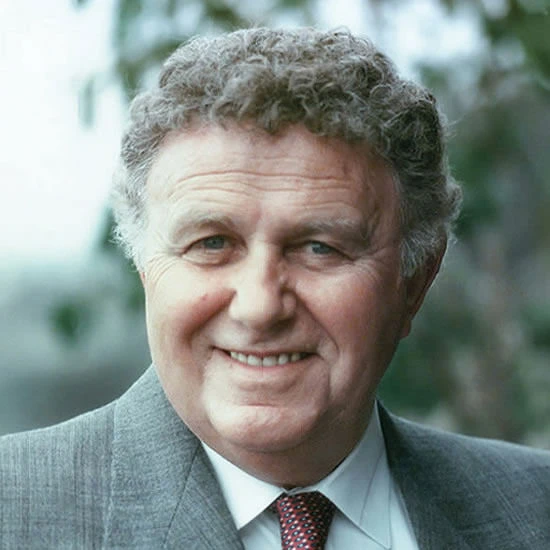
He was known for his ability to communicate and educate with humor and honesty, making complex concepts accessible to many. His methods were honed over years of practice and have significantly influenced how hypnotherapy is perceived and practiced today.
One of Kappas' monumental contributions was the definition of the profession of hypnotherapy in 1973. He penned and defined the terms "Hypnotist" and "Hypnotherapist" for the Federal Dictionary of Occupational Titles, a definition that remains intact to this day, underscoring the enduring impact of his contributions.
Dr. Kappas is also celebrated for his groundbreaking "Message Unit Theory of Hypnosis" and the innovative model of "Emotional and Physical Suggestibility and Sexuality" (E & P Suggestibility and Sexuality). These models provided a roadmap for hypnotherapists, helping them understand how each client requires a unique approach based on their emotional and physical suggestibility.
His exploration into suggestibility was inspired by observations made during his practice. He noticed varying responses to different types of suggestions, which led him to categorize individuals as "emotional" or "physical" based on their responsiveness. This categorization was part of his broader endeavor to understand the workings of the mind and to enhance the effectiveness of hypnotherapy.
Besides his academic and practical contributions, Kappas was also an author, with numerous books (including the Professional Hypnotism Manual $) and video instructions left as a legacy for the HMI student body and the hypnotherapy community at large. His clientele included a diverse range of individuals, from top celebrities and athletes to business magnates, showcasing the broad appeal and applicability of his hypnotherapy methods.
Dr. Kappas' indelible mark on hypnotherapy continues to be felt today, through the institutions he founded, the theories he developed, and the large body of work he left behind. His journey reflects a lifelong commitment to unraveling the mysteries of the human mind and using this knowledge to foster positive change in individuals and the broader community.
Modern Applications of Hypnosis
Hypnosis has come a long way since its ancient origins, and today it is widely recognized for its diverse range of applications in various fields. Modern science has uncovered numerous ways in which hypnosis can be utilized to improve physical and mental well-being. From pain management to psychological disorders, hypnosis has proven to be a valuable tool in modern medicine, psychology, and therapy.
One of the most prominent applications of hypnosis in modern times is in the field of pain management and anesthesia. Numerous studies have shown that hypnosis can effectively reduce pain perception and even eliminate the need for traditional analgesics during medical procedures. By inducing a deep state of relaxation and altering the perception of pain, hypnosis allows patients to undergo surgeries or dental procedures with minimal discomfort. This not only improves patient experience but also reduces the reliance on potentially addictive pain medications.
In addition to pain management, hypnotherapy has gained recognition as an effective treatment for various psychological disorders and behavioral change. Hypnotherapy involves using hypnosis as a therapeutic technique to address issues such as anxiety, phobias, addiction, and weight management. Through guided imagery, suggestion, and visualization techniques, hypnotherapy helps individuals tap into their subconscious mind to uncover underlying causes of their problems and make positive changes at a deeper level. It can be used alongside traditional psychotherapy or as a standalone treatment approach.
Furthermore, hypnosis has found its place in sports performance enhancement and personal development. Athletes have long recognized the power of mental conditioning in achieving peak performance. Hypnosis can help athletes overcome performance anxiety, improve focus and concentration, enhance motivation, and boost self-confidence. By accessing the subconscious mind through hypnotic techniques, athletes can reprogram negative beliefs or self-doubts that may hinder their performance. Similarly, individuals seeking personal development can benefit from hypnosis by addressing limiting beliefs or habits that hold them back from reaching their full potential.
Apart from these specific applications, hypnosis continues to evolve and find new uses in various fields. Researchers are exploring the potential of hypnosis in areas such as addiction recovery, sleep disorders, irritable bowel syndrome, and even enhancing creativity. As our understanding of the mind and its capabilities expands, so does the scope of hypnosis as a therapeutic tool.
Conclusion
The evolution of hypnosis is a captivating journey that has spanned centuries, from its ancient origins to its modern applications in medicine, psychology, and therapy. Throughout history, hypnosis has been shaped by the contributions of key figures and the development of new techniques and theories. Today, hypnosis continues to hold immense importance in contemporary society, with its potential for healing, personal growth, and transformation.
In summary, the history of hypnosis can be traced back to ancient civilizations such as Egypt and Greece, where trance-like states were used for healing purposes. Over time, influential figures like Franz Mesmer and James Braid played pivotal roles in shaping our understanding of hypnosis as a distinct field of study. Mesmer's concept of animal magnetism and Braid's emphasis on suggestion laid the foundation for modern hypnosis.
The 20th century witnessed significant advancements in the practice of hypnosis. Sigmund Freud explored the use of hypnosis in psychoanalysis, while Milton H. Erickson revolutionized the field with his innovative approaches to therapeutic trance induction. These developments paved the way for the establishment of professional organizations such as the American Society of Clinical Hypnosis and the British Society of Clinical Hypnosis.
In recent years, hypnosis has found diverse applications in various fields. In medicine, it has been used as an adjunctive therapy for pain management, anesthesia during surgery, and treatment for conditions like irritable bowel syndrome (IBS) and insomnia. In psychology, hypnotherapy has shown promise in addressing anxiety disorders, phobias, addiction issues, and even improving sports performance. Furthermore, self-hypnosis techniques have gained popularity among individuals seeking personal growth and self-improvement.
The evolution of hypnosis is far from over. As research continues to uncover new insights into the workings of our mind and consciousness, we can expect further advancements in this field. The integration of technology with hypnosis opens up possibilities for virtual reality-based hypnotherapy and the use of biofeedback devices to enhance therapeutic outcomes.
In conclusion, the history of hypnosis is a testament to the power of the human mind and its potential for healing and transformation. From ancient practices to modern applications, hypnosis has evolved into a respected field with a wide range of uses. Whether it's in medicine, psychology, or personal development, hypnosis continues to offer valuable tools for individuals seeking positive change. As we look towards the future, it is exciting to envision the continued growth and impact of hypnosis in helping individuals unlock their full potential and lead fulfilling lives.
Member of:
American Hypnosis Association (AHA)
Member: #002958
2014-2024
Professional Organization of Stage Hypnotists (POSH)
2016-2024
Association of Professional Stage Hypnotists
2016-2024
Association of Professional Hypnotherapists & Psychotherapists (APHP)
2016-2024
Association of Complete Mind Therapists (ACMT)
2016-2024
International Certification Board of Coaches and Hypnotists (ICBCH)
2023-2024
American Alliance of Hypnotists (AAH)
2023-2024
Certified By:
American Hypnosis Association (AHA)
Cert ID: #010529
2014-2024
International Certification Board of Coaches and Hypnotists (ICBCH)
2023-2024
Important Pages:
Copyright © 2024 Michigan Hypnosis Institute, LLC. All rights reserved.
* DISCLAIMER: Results may vary from person to person. We guarantee the very best service using current information and appropriate hypnotic techniques for your situation. Hypnosis and hypnotherapy are not meant to diagnose or treat any disease, but rather to guide you toward being more effective in helping yourself make positive changes. Issues of a medical or psychological nature can only be worked on in conjunction with and referral from a licensed medical or psychological professional.



